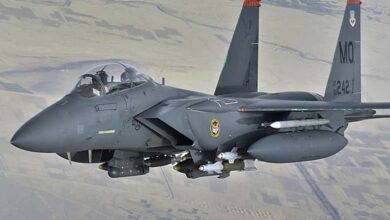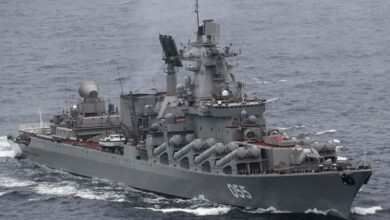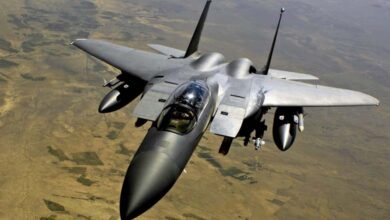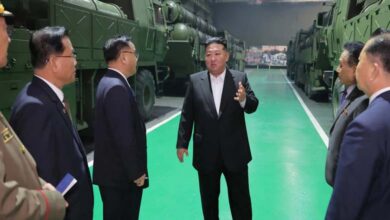The military crisis between Ukraine and Russia has escalated
After the Escalation of the Military Crisis... Bleak Scenarios for the Conflict between Ukraine and Russia
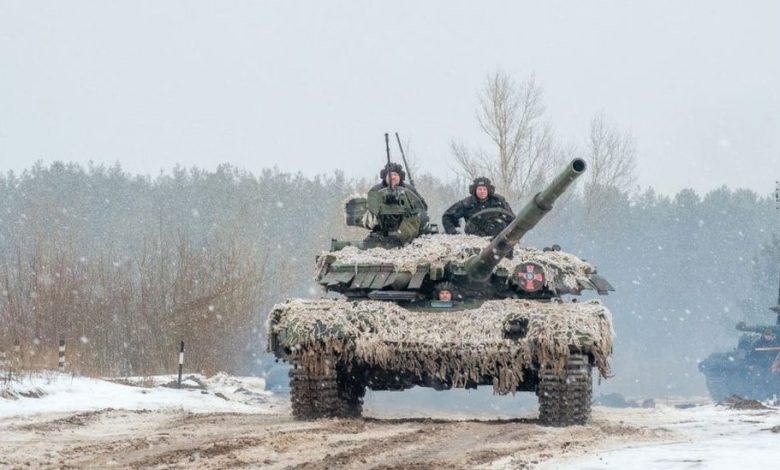
The crisis between Russia and Ukraine entered a new phase this summer when Kyiv launched its long-anticipated counteroffensive. There were hopes that Ukraine would regain the upper hand, but instead, its forces are facing a formidable frontline stretching 600 miles with extensive Russian defensive fortifications – in some places reaching depths of up to 19 miles – built during the winter while Ukraine awaited more heavy weaponry from its allies before launching its counteroffensive in June.
According to the American network CNN, it has become clear that the counteroffensive will not lead to swift results and that success – however measured in terms of regaining control over Russia-occupied territories – is not guaranteed.
Military Warnings
Military experts caution that this means the war is likely to be protracted, putting immense pressure on Ukraine to fight for several more upcoming years and potentially requiring its international partners to commit billions of dollars in military, humanitarian, and financial resources.
Retired British General Richard Barrons, former Commander of UK Joint Forces Command, stated, “By the end of this year, both sides believe that they can still win more fighting, and Russia cannot afford to lose, nor can Ukraine afford to give up occupied land. It just wants more support to take it back. That will take us to 2024 and perhaps as far as 2025.”
Barrons added that Ukraine’s counteroffensive is likely to make some progress in the remaining months of this year – but not close enough to ending the crisis, saying, “To some extent, we need to accept that it’s evidence that Ukraine can win on the battlefield, but it will require a big effort, continued support for Ukraine, and a significant effort. I think we’re talking around $100 billion a year from all of its backers, at least, in 2024 and 2025.”
No End in Sight
It has been hoped that the Ukrainian counteroffensive could shift the momentum in its favor, but Russian forces have advanced along the front line stretching from eastern Ukraine to its south. This has resulted in the creation of deep defensive lines, including minefields, bunkers, trenches, and tank obstacles, in some areas reaching up to 30 kilometers in depth.
Nick Reynolds, Research Fellow for Land Warfare at the Royal United Services Institute (RUSI) in London, said it should not be surprising that the counteroffensive is challenging.
He continued, “The Russian armed forces have had a big chance in the early months of this year to dig very extensive wide defensive belts. If you look at the sort of depth of the defense they’ve built, it’s always going to be a really big challenge for the Ukrainians to crack that, especially considering their air forces are not able to work over the Russian lines.”
One of Ukraine’s main goals is to sever the Russian land bridge that runs from Russia through the occupied southern part of Ukraine to the Crimean Peninsula. But this area has among the strongest Russian fortifications.
Reynolds added, “Literally, Ukrainian forces have just run into the first line of defenses now, but this is a 30-kilometer deep belt of minefields, trenches, counterattacks, all the way from where they are to the sea about 60 miles, and they’ve managed to cut about 5 miles, and that’s a really big ask.”
He added, “The Russian strategy is to hold the land they’ve got and they’ll be very stubborn about it, believing two things: firstly, the Ukrainian will die for this struggle for 15% of the country will become demoralizing when they start losing the sort of numbers that usually come with an offensive, and secondly, Western enthusiasm to foot the bill will wane because we want to spend our money on other things.”
Bleak Scenarios
Defense experts say it’s unlikely the counteroffensive will see any breakthroughs this year, but they point out that it’s crucial for Ukraine to be able to show some gains in order to maintain Western support for the war until 2024 and perhaps beyond.
Jamie Shea, a former senior NATO official and defense and international security expert at Chatham House, stated, “Clearly, from the Ukrainian perspective, you need to have achieved some significant successes at least in order to be able to go to NATO and the United States.”
Shea added, “I think the danger for the Ukrainians is if they get to the point where they are hitting a brick wall, where they’ve made very, very little territorial gains, where a lot of the equipment that the West supplied has been scrubbed and the Ukrainians have incurred very, very heavy losses.”
He further explained, “This may encourage critics of the war to increase public dissatisfaction with continuing to fund Ukraine, and it becomes a problem in terms of producing and supplying weapons for the West.”



